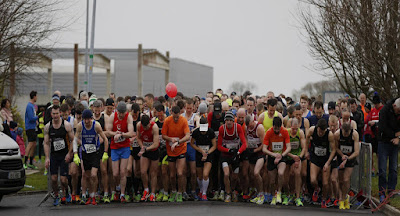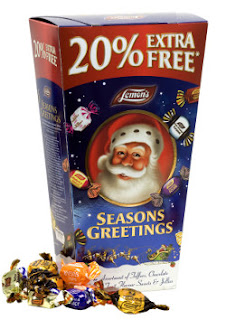5. Some tips on where to run.
So training might be getting tough around about now. Part of this is because we’ve entered the staff night and ‘Christmas Season’ season! A place where intervals and long runs do battle with office parties and burgeoning lunches. It will be hard for everyone, but persevere!
With the miles building week on week it isn’t a bad idea to reflect on the surfaces you are spending more and more hours running on. I’ve heard it said that during a marathon you will lose a few centimetres as the pounding of the road takes its toll. The good news of course is that you grow back.
 Nails: Not recommended because it will burst the gels in your Asics and two because… well… they’re nails!
Nails: Not recommended because it will burst the gels in your Asics and two because… well… they’re nails!
This week's training:
With that in mind however it is worth considering just how much time training on hard surfaces you are doing and whether there are alternatives. As a help here is a quick guide to the surfaces we roll on and in from good to bad –
Grass: Perhaps the nicest surface to run on. Even in the warmest and driest of periods, grass retains its bounce. This is important and noticeably so especially for longer runs. The after-effects of 16 miles on the green feel so much better than 16 miles on the grey. In fact the only downsides of grass running can be the muck (if mucky), the length you can get out of a lap before it gets repetitive and how come winter when the light fails, there is rarely any street-lights around that can allow you out, meaning grass runs are day-time runs.
Trails: As good as grass, trails, by their nature, are often a lot longer than grass runs and would have to rate as perhaps the most enjoyable routes to run solo as each corner often brings with it new scents, smells and sights. While in Ireland there are very few downsides to trail running, in other countries the addition of wild bears, poisonous snakes and forest fires can sometimes make them a little bit fruitier than your average road-side run.
Track: Lovely bounce to it. Great for speed sessions. But try and do 8+ miles on a 400 metre track and then tell me how fun it is. You’d want to be running alongside Woody Allen, Steve Coogan, Amy Shumer & Jerry Seinfeld to enjoy that.
Sand: Lovely, especially at dawn with the sea gently lapping along the edge almost all the way up the coconut trees. Not so common in Ireland.
Treadmill: More forgiving than tar, asphalt or concrete but feck all craic.
Tarmac: Tarmac brings the runner into the category that could also be called the “not great to be running on all your life” category. Tarmac paths around village, town or city offer perhaps the most preferable way for urban runners to go about their training. This is especially so for tarmac paths especially made for pedestrians that can allow runners to follow along in any conditions or light.
Road: Made also of tarmacadam but that little bit harder due to years of traffic, road surfaces are the country-runners chalkboard where they draw out their hours of training. With their toughness and camber (the road’s slope that falls away from you), years of running on these surfaces will eventually catch up with you. However, there are few better routes to take that will allow you generate such distance without having to do loops
Concrete: The worst conditions you are likely to meet, runners should avoid these like the plague, particularly so when a pedestrianised path is of concrete and the bike-path of asphalt. In such cases keep an ear out for the bicycle bell and stick to the asphalt. You will notice it at the end.
 Nails: Not recommended because it will burst the gels in your Asics and two because… well… they’re nails!
Nails: Not recommended because it will burst the gels in your Asics and two because… well… they’re nails!
Burning Embers: Only recommended if you are hypnotised or a member of a relatively obscure Polynesian tribe and this is interval training.
Embers covered with nails: No.
This week's training:
Slow run: 40 minutes.
Tough run: 10 minutes warm up – 15 minute tempo* run – 10m minutes warm down.
Long run: 50 minutes slow.




Comments
Post a Comment